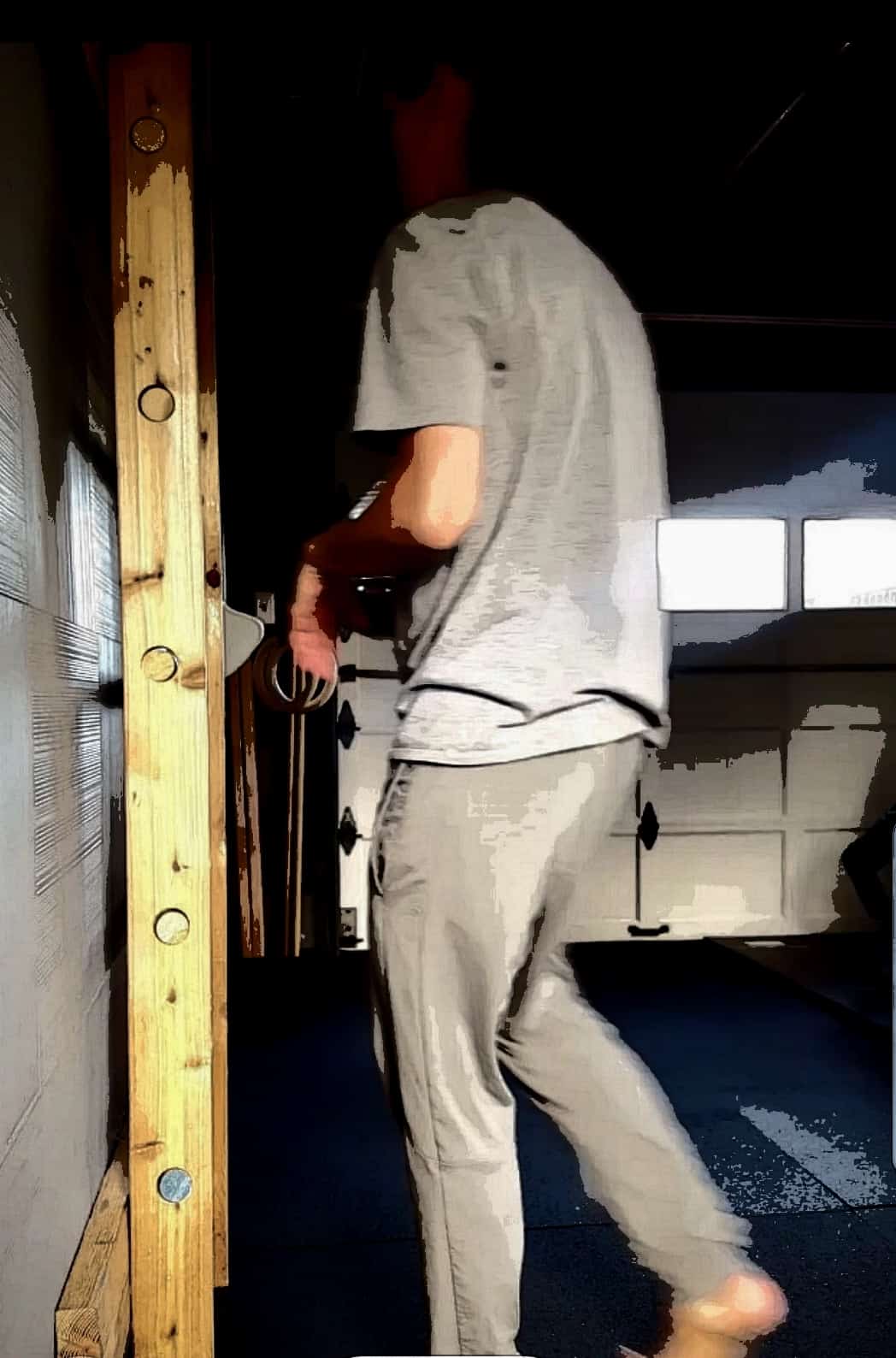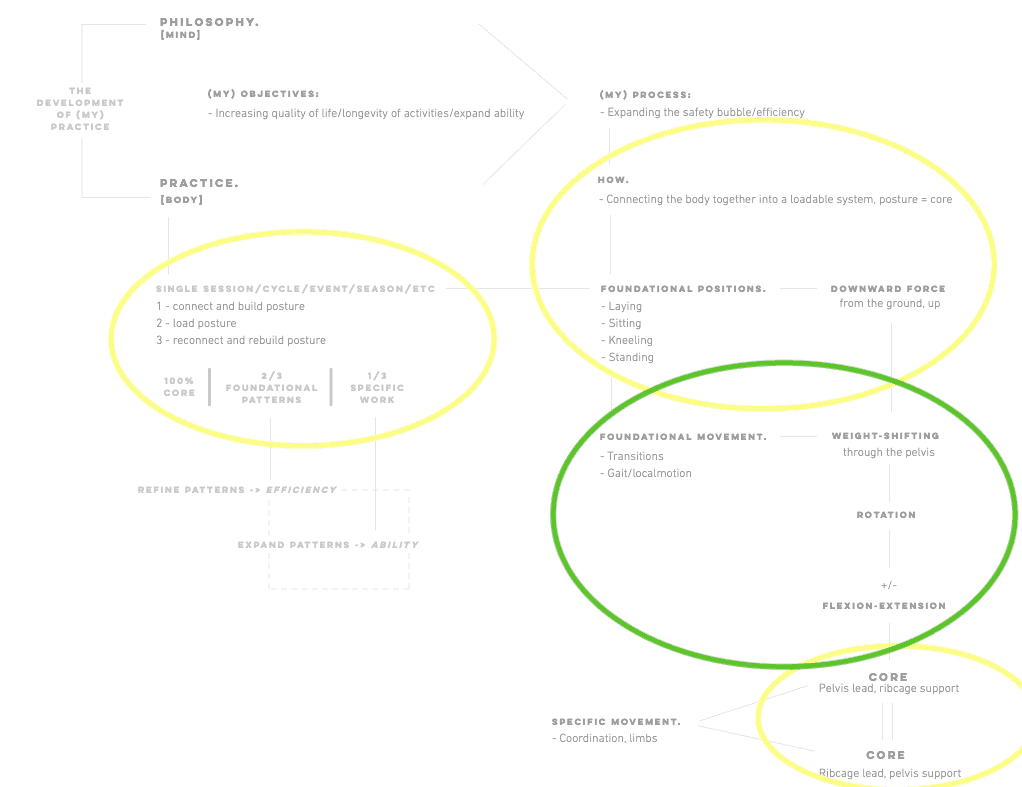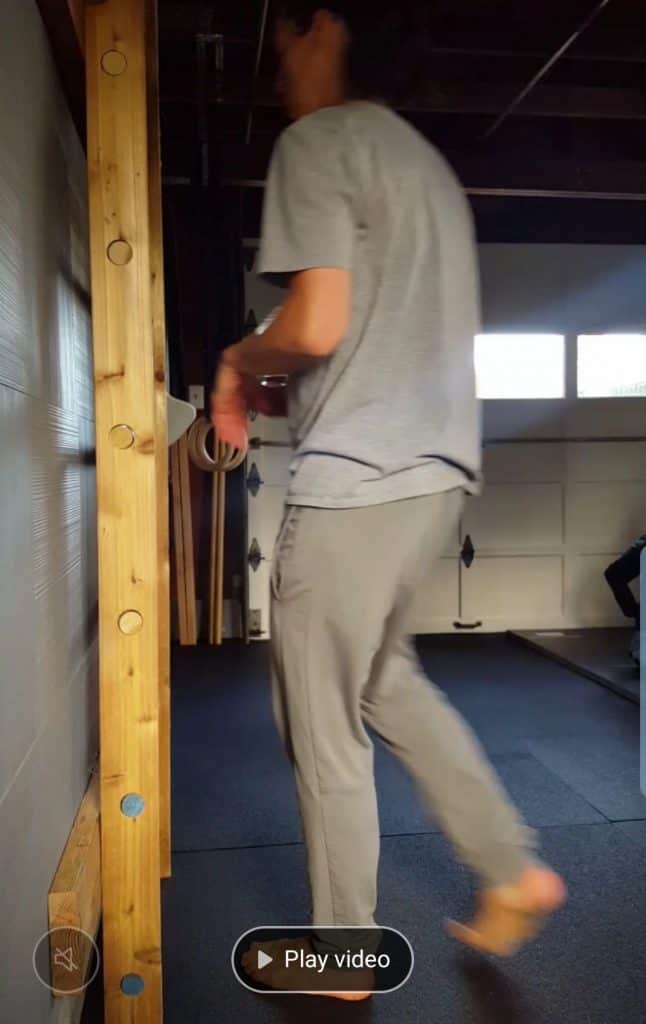
Core as Posture
For the better part of a year, Nicole Uno has been offering me her insights on movement. There have been a few big picture concepts that have completely shifted my perspective (I’ll re-link these at the end), but perhaps the most dramatic and far-reaching has been the study of the body at rest. How I held myself before, after, and in-between movements was different than during. The former lasting much longer than the latter, I was reserving my attention for the least natural state.
Why was there a pre-emptive moment of ‘fixing’ posture before entering a particular movement or exercise? If the body ‘knew’ where correct was, why didn’t it use it all the time? The positional efficiency of training did not reflect the positional efficiency of rest. They needed better alignment to frame a consistent structure to build upon.

The practice and philosophy of @unotraining. Yellow is directly related to core as posture, green indirectly.
The following photo was a screenshot captured from an instagram preview. I look like Mr. Burns. Ironically, it was right before some open postural work. I was examining scapular motion with a fixed elbow, and needed to utilize an extended rib cage to do so.

Why might posture falter in the first place? For me, I can trace it back to low back issues and a fixation on the pelvis. I learned that if I could posterior tilt, the pain went away. Posterior tilting is a form of flexion. Ignoring my ribs, they defaulted to assisting into this position, also flexing or rounding.
Posture is a result of habit building, and time spent.
Connected by solid sticks and fibrous tissue, one’s carriage is adaptable but defects to a place free of pain and effort. Changes that occur come from lifting rather than pressing down. We fight gravity instead of use it. We get less open and more closed. Safety, once learned, is forgotten. Compensations shift us toward sedentary efficiencies, and rest begins to look much different than active work (until it doesn’t, and they fuse into the downgraded pattern). The newer, more recently practiced arrangement becomes more fixed than flexible.
To undo this degenerative spiral, the work must be done outside the gym or training session. It must make conscious what is occurring during comfort.
Posture is less a look or form and more a feeling of weight distribution.
Noticing what my tendencies were while sitting and standing changed everything. When standing I load my left leg much more so than my right. When sitting, it’s reversed, mostly stacking atop my right hip. The adjustments made were tiny corrections seeking balance. I would load my right leg when standing a while, and shift my weight to my left hip during long car rides or writing sessions. Later, when I would sneak an assessment on myself, I found things more even. As I found things more even through the hips and pelvis, I looked up towards the ribs and scapula.
Since the ribs and upper body does not naturally bear weight, they are a bit trickier to pinpoint into position. Furthermore, hanging is the opposite of pushing down, so it is harder to apply pelvis concepts to the ribs. Instead of up and down, I found experimenting with the concept of forward and back more helpful. Forward translates to extension, and back to flexion.
What is interesting is that 95% of ab work (crunches, etc.) moves the ribs in relation to the pelvis. The pelvis anchors the system to the ground, and the ribs twist and fold. A contrasting move would be dragon flags. The body stacks and tries to lengthen upon the rib cage:
Changing your rib position from closed to open and then holding it there FOREVER is the ultimate core ‘workout’.
Less intense = more consistent.
More consistent = lasting change.
For good or for bad.
A final example of noticing and then manipulating ordinary, every day acts:
Remember that hard, by definition, is inefficient. To be effective, one needs many inputs of multiple means to develop an over-riding efficiency. Making things easy means backing off from complexity. Difficult is conditional. Studying your condition at rest is more telling than any temporary exercise.
The promised ‘big idea’ list of articles from Uno:
[A comprehensive list can be found by going to ‘blog’ and checking the ‘Nicole Uno’ box.]



